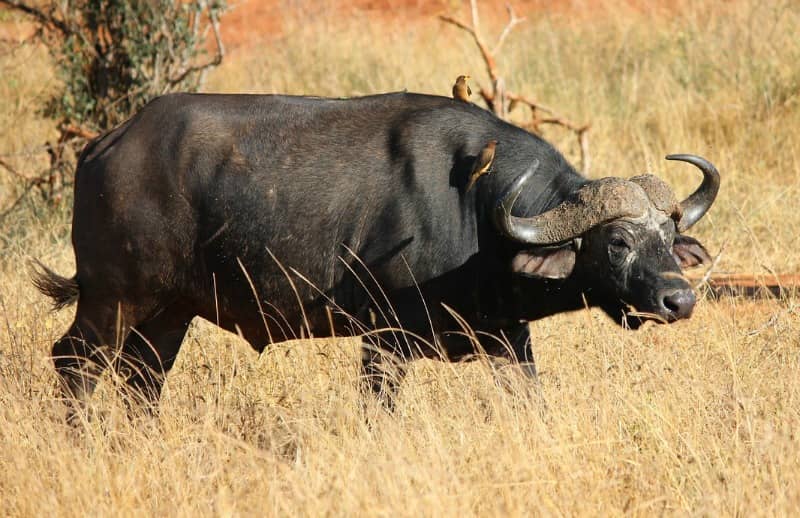 |
| The African Buffalo |
The African buffalo is not an ancestor of domestic cattle and is only distantly related to other larger bovines. Owing to its unpredictable nature, which makes it highly dangerous to humans, the African buffalo has never been domesticated, unlike its Asian counterpart, the water buffalo. Other than humans, African Cape buffaloes have few predators aside from lions and large crocodiles, and are capable of defending themselves. Being a member of the big five game, the Cape buffalo is a sought-after trophy in hunting.
The African buffalo is a very robust species. Its shoulder height can range from 1.0 to 1.7 m (3.3 to 5.6 ft) and its head-and-body length can range from 1.7 to 3.4 m (5.6 to 11.2 ft). Compared with other large bovids, it has a long but stocky body (the body length can exceed the wild water buffalo, which is heavier and taller) and short but thickset legs, resulting in a relatively short standing height. The tail can range from 70 to 110 cm (28 to 43 in) long. Savannah-type buffaloes weigh 500 to 1,000 kg (1,100 to 2,200 lb), with males normally larger than females, reaching the upper weight range.[3] In comparison, forest-type buffaloes, at 250 to 450 kg (600 to 1,000 lb), are only half that size.[4][5] Its head is carried low; its top is located below the backline.
The front hooves of the buffalo are wider than the rear, which is associated with the need to support the weight of the front part of the body, which is heavier and more powerful than the back. Savannah-type buffaloes have black or dark brown coats with age. Old bulls often have whitish circles around their eyes and on their face. Females tend to have more-reddish coats. Forest-type buffaloes are 30-40% smaller, reddish brown in colour, with much more hair growth around the ears and with horns that curve back and slightly up. Calves of both types have red coats.
A characteristic feature of the horns of adult male African buffalo (Southern and Eastern populations) is that the bases come very close together, forming shield referred to as a "boss". From the base, the horns diverge downwards, then smoothly curve upwards and outwards and in some cases inwards and or backwards. In large bulls, the distance between the ends of the horns can reach upwards of one metre (the record being 64.5 inches 164cm).
The horns form fully when the animal reaches the age of five or six years but the bosses do not become "hard" till 8 to 9 years old. In cows, the horns are, on average, 10–20% smaller, and they do not have a boss. Forest buffalo horns are smaller than those of the savanna buffalo from Southern and Eastern Africa, usually measuring less than 40 centimetres (16 in), and are almost never fused.
Source: Wikipedia
No comments:
Post a Comment